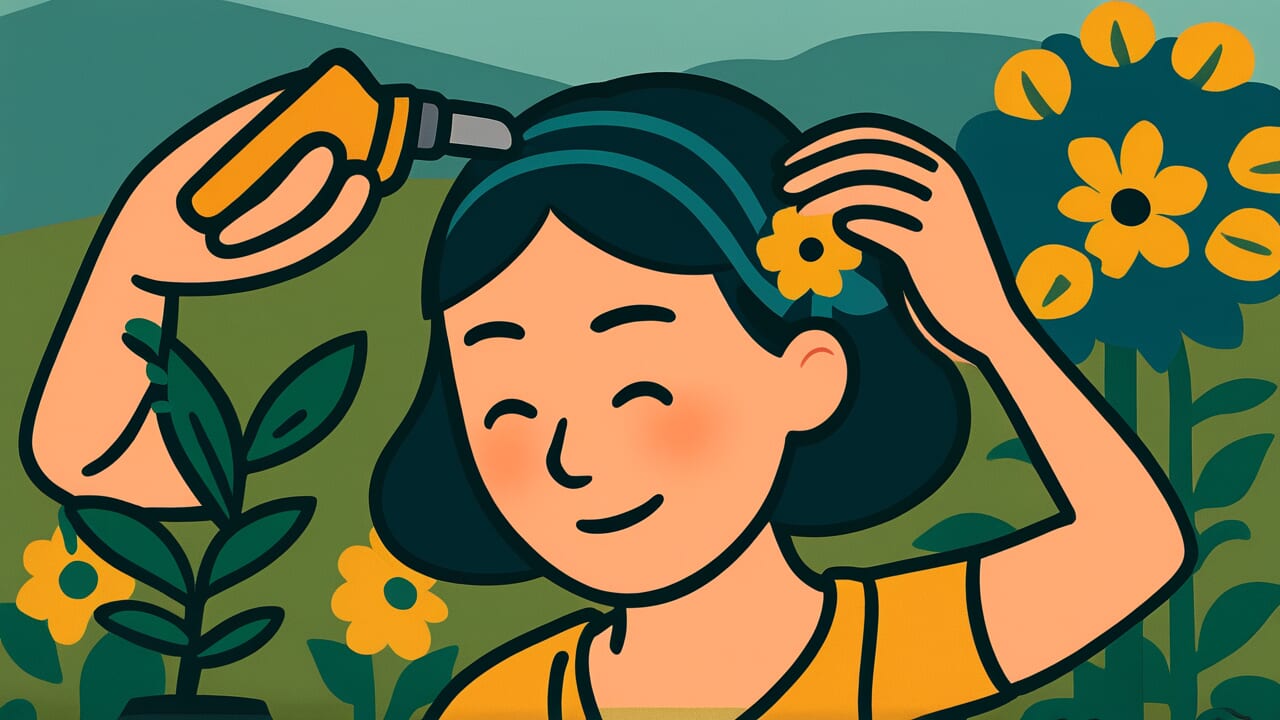How to Read “Wear the flowers of the time in your hair”
Toki no hana wo kazashi ni seyo
Meaning of “Wear the flowers of the time in your hair”
This proverb teaches that you should cherish what is most valuable and beautiful in each moment, and make it your own.
The “flowers” here don’t just mean literal flowers. They represent whatever shines brightest and holds the most value in a particular time or situation.
The phrase “wear in your hair” shows that you shouldn’t just observe from a distance. You should actively embrace these valuable things and make them part of yourself.
This proverb is used when you want to tell someone not to miss opportunities. It encourages people to learn from what is most valuable right now.
It teaches the importance of being sensitive to trends and changes in the times. You should be willing to learn from whatever shines brightest at any given moment.
Today, this can mean new knowledge, technology, or cultural values. The interpretation is quite broad.
Origin and Etymology
No clear written records explain the origin of this proverb. However, the words themselves reveal an interesting background.
The word “kazashi” refers to decorative ornaments used from ancient times through the Heian period. These were flowers or branches worn in the hair or on crowns.
Nobles would adorn their hair with seasonal flowers. This allowed them to wear nature’s beauty and enjoy the atmosphere of each season.
At court events and banquets, choosing flowers appropriate to the season showed refinement and aesthetic sense.
The expression “flowers of the time” is also significant. It doesn’t just mean seasonal flowers.
It means “the flowers blooming most beautifully at this very moment.” Cherry blossoms shine in spring, irises in early summer, and chrysanthemums in autumn.
This proverb likely emerged from Japan’s traditional aesthetic sensibility. It values the beauty that can only be experienced in this fleeting moment.
By saying “wear them,” it teaches more than just appearance. It encourages an attitude that treasures seasonality and timing in your heart.
Usage Examples
- Video editing is big right now, so following “Wear the flowers of the time in your hair,” I should learn that skill
- I think we should learn from younger generations with the spirit of “Wear the flowers of the time in your hair”
Universal Wisdom
This proverb has been passed down through generations because it captures two opposing human tendencies perfectly.
First, humans tend to cling to the past and hold onto familiar things. We fear change, avoid new things, and often think “the old days were better.”
Second, humans are also attracted to new things and chase the cutting edge. We have an innovative nature that seeks what’s next.
The deep wisdom of this proverb lies in avoiding both extremes. “Flowers of the time” suggests flexibility.
It doesn’t seek eternal, unchanging values. Instead, it recognizes what shines in this very moment.
At the same time, “wear them in your hair” encourages active engagement. You shouldn’t just drift with the current.
You should actively choose and embrace what matters now.
Life constantly changes. What had value yesterday may fade today.
But rather than lamenting this, you should recognize the beauty of flowers blooming right now. You should absorb them and make them your own.
Our ancestors understood that this flexible, positive approach to life is the wisdom needed to thrive across any era.
When AI Hears This
Throughout the universe, entropy constantly increases. Milk poured into coffee mixes on its own. Rooms get messy if left alone.
This is the second law of thermodynamics. Yet life on Earth receives energy from the sun and locally decreases entropy. It creates order.
The act in “Wear the flowers of the time in your hair” symbolizes this local entropy decrease. Picking flowers blooming right now and placing them in your hair uses energy to temporarily create beauty.
The moment a flower is picked, it begins to wither. Eventually it returns to disorder.
The human body is the same. It maintains order by obtaining energy from food, but ultimately cannot resist increasing entropy.
What’s interesting is that this temporariness creates value. Thermodynamically, eternal order is impossible.
That’s why humans intentionally create low-entropy states within limited time. Dressing up for festivals, cleaning rooms, arranging food beautifully.
All these acts consume energy to create temporary order.
Because we cannot defy the universe’s fundamental principle, orderly beauty in this moment has meaning. Because of the constraint of increasing entropy, humans developed wisdom to cherish “now.”
Lessons for Today
This proverb teaches you the courage to embrace change and actively learn what has value right now.
We often cling to past successes and familiar methods. But times are definitely changing.
Skills that worked yesterday may become outdated today. That’s why it’s important to develop eyes that can see what shines brightest now and what holds value.
This is different from blindly following trends. As “wear in your hair” suggests, you shouldn’t just observe.
You need to digest and truly make these things your own. New technology, new ways of thinking, new culture.
Learning these things enriches you and expands your possibilities.
Age doesn’t matter. You can start finding and learning from the flowers of the time right now, at any moment.
Enjoy change and keep growing. That’s the most important message this proverb offers to you living in the modern world.



Comments